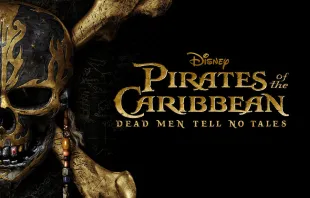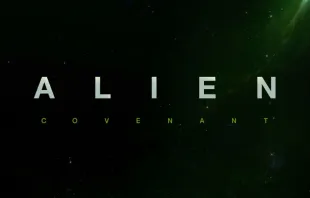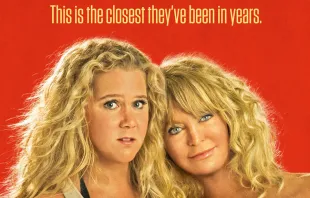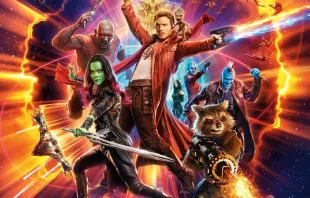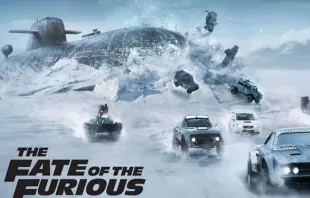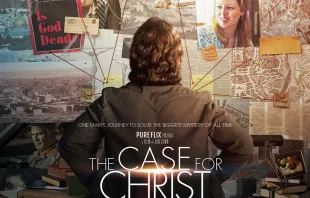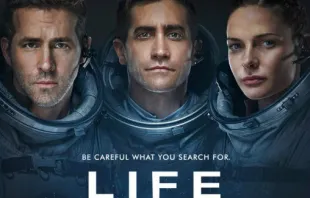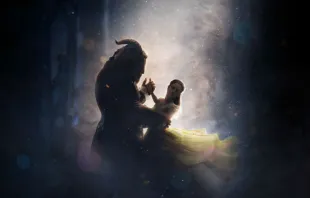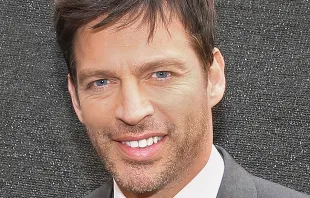Articles by Carl Kozlowski
Double Review: “Baywatch” and “Dead Men Tell no Tales”
May 30, 2017 / 00:00 amHollywood has been having a hard time coming up with original ideas over the past several years. With countless superhero movies, reboots of old ideas and franchises putting out their umpteenth sequels, it’s a rare treat to find a movie that actually has some inventiveness. This week sees the release of a particularly dire entry, as the feature-film adaptation of the legendarily stupid 1990s TV hit “Baywatch” hits the big screen and fails to entertain on any level, while adding heavy layers of unnecessary raunchy humor. At the same time, Johnny Depp sails in to save the day for families and anyone who enjoys good, mostly clean fun with his latest adventure as Captain Jack Sparrow, “Pirates of the Caribbean: Dead Men Tell No Tales.” Following the vapid adventures of a group of Los Angeles lifeguards, “Baywatch” inexplicably became the most-watched TV show in the world, with a weekly audience of more than a billion people for 12 seasons starting in 1989. That maddening fact is no doubt what drove Paramount Pictures to bring “Baywatch” back to life on the big screen this weekend. The new incarnation teams Dwayne Johnson and Zac Efron as lifeguards with clashing styles in an attempt to add a layer of ridiculous, self-knowing comedy to the slow-motion running, skimpy outfits and ocean heroics. Johnson replaces David Hasselhoff in the lead role of Mitch Buchannon, who almost immediately finds that a slickly packaged baggie of a new illegal drug has washed up on the beach, and wants to find the source. But before he can launch his investigation, Efron shows up as a new, impossibly buff and incredibly stupid guy named Matt Brody, who was a two-time Olympic champion swimmer before an embarrassing televised incident in which he vomited in a pool and kept swimming. Mitch’s boss Captain Thorpe (Rob Huebel) thinks having an Olympian on the squad will be great publicity for the Baywatch team and orders Mitch to add him without the required physical tryout. Brody’s cockiness clashes with Mitch’s attempts to take the job seriously, and results in a nonstop parade of pretty-boy insults from Mitch that generated only one big laugh from the audience. Meanwhile, a pudgy loser named Ronnie (Jon Bass) is added to the team due to his sheer determination, setting up a series of awkward encounters with his lust interest CJ (Kelly Rohrbach) that are embarrassing for both his character and the audience to endure. The Baywatch gang ultimately set its sights on new local club owner Victoria Leeds (Priyanka Chopra) as their chief suspect, as bodies start to pile up. The scenes where she appears to act nefariously with her henchmen and victims feel like a live-action version of a “Scooby-Doo” villain, ensuring “Baywatch” doesn’t have one second of suspense or mystery along the way. What it does have is a constant jarring clash of tones, veering wildly between slow-motion action scenes and incredibly vulgar attempts at laughs that aren’t able to be described in a Catholic/family setting. There are also at least 60 uses of the “F” word, plenty of crass sexual innuendoes and a surprisingly gruesome end for the villain. Thankfully, the audience at an early screening met the movie with silence, providing hope that there are still some standards for what audiences will find funny these days. Meanwhile, the latest “Pirates” marks the first film in six years for that series, and a welcome return to form for Depp, whose movies have mostly bombed in the interim. The new edition opens by following Henry, the son of Captain Jack’s old sidekicks Will and Elizabeth, as he attempts to free his father from the curse of the Flying Dutchman. The curse forces Will to forever ferry the souls of the dead, living apart from his son and his wife, Elizabeth. Henry thinks Poseidon’s trident, which holds power over the seas, can break the curse, and despite his father claiming nothing will help him, Henry tracks down Captain Jack years later and enlists his help in finding the trident. The two run afoul of a ghost zombie ship led by a ghostly Spanish captain named Salazar – a long-ago enemy of Jack – and his equally undead crew. They meet a gorgeous astronomer named Carina, who has a book written by Galileo that she believes has the clues needed to find a mysterious island that holds the trident. After Henry helps Jack escape a guillotine and Carina escape hanging after being wrongly accused of witchcraft, the three team up to find the trident. Jack believes it will help him discover treasure, while Carina hopes it will help her find her long-lost father and Henry aims to break his father’s curse. Yet Captain Salazar and his crew are also in hot pursuit of revenge against Jack, teaming with Sparrow’s other longtime enemy Captain Barbossa to bring him down. The resulting race against time and the wilds of the sea make for a richly entertaining adventure that most can easily enjoy. As always, Disney keeps the pirates’ language squeaky clean, aside from some occasional innuendoes, and the swashbuckling action and inventive stunts are played for excitement and laughs. That combination keeps the movie from being bloody or seriously violent, though Captain Salazar and his menacing crew might prove too scary for kids under 10. Of course, Jack is frequently drunk, but this is also portrayed in such a cartoonish fashion that it’s impossible to take seriously. A big and surprising plus this time is the strong themes of family and forgiveness that arise through the quest to free Will and Carina’s determination to find her own father, and an equally surprising and moving change of heart by one key character. All told, the new “Pirates” is a winner for just about any age, while “Baywatch” drowns. Don’t let yourself get pulled down with it.
Double Review: “Alien: Covenant” and “Everything, Everything”
May 19, 2017 / 00:00 amWith the summer movie season kicking into high gear, there’s plenty of films coming out each weekend – and this time around, you can’t ask for a bigger difference in styles than the latest epic in the “Alien” series, and the teen romance “Everything, Everything.” “Alien: Covenant” marks the sixth official film in the “Alien” series, which means no one counts the two awful and stupid “Alien Versus Predator” movies made just over a decade ago. Director Ridley Scott exploded into the top tier of directors with the first “Alien” in 1979, and after branching out with an eclectic array of other classics including “Gladiator” and “Thelma & Louise,” he returned to the well with the “Alien” prequel “Prometheus” five years ago. That film launched a trilogy designed to show how the vicious aliens came into being prior to the initial film’s atrocities, and this weekend he’s back to reveal more of how the aliens originated with “Covenant.” But with less memorable humans in the battle, it’s getting harder to care about their fates. The film opens with a flashback to an unspecified time decades before when David (Michael Fassbender), the android who played a key role as part of the crew in “Prometheus,” was being trained by its creator, Dr. Weyland (Guy Pearce). As they discuss God and creation, there is a brewing air of tension between the two as David seems to bristle at the idea of being controlled. But most of the film takes place in 2104, about a decade after “Prometheus,” and features a giant spaceship called Covenant with a 16-member crew in charge of 2,000 people and hundreds of embryos all hoping to colonize a distant planet. All are in cryogenically suspended sleep for the decades-long journey, under the care of an android named Walter (also Fassbender), and another android in the mold of David. When the Covenant gets caught in a space storm that cuts off some of its power, the crew is forced awake. The captain (James Franco in what has to be the shortest cameo in years) dies in the havoc, leaving Oram (Billy Crudup) in charge amid tensions wrought by the fact he orders them to fix the ship with no real time to mourn the death of their former leader. The ship suddenly receives a video signal of a woman speaking English, and Oram orders the crew to go off-course and explore the planet it came from. As they land, they are surprised to find it so similar to Earth that Oram tells them to consider it as an alternative place to simply stop and colonize instead of their original destination. What they don’t yet realize is that the planet is where the Prometheus ship of the prior film disappeared, and everything is covered with alien pathogens. When one unfortunate crewman is infected, they soon find themselves under attack by alien creatures that start out small and morph ever further into the grisly beasts that fans have come to know and fear. They also stumble across David, who has been living there in darkness for the past decade — leading to tension between Walter and David that could affect them all. Director Scott continues his tradition of brewing slow-building tension and an intense sense of atmosphere, with the film taking at least 45 minutes to have its first big alien encounter. Once they start, however, the battles come fast and furious, with plenty of inventive ways for the crew to die. While “Covenant” features a certain interest in engaging philosophical ideas about the nature of creation, the film is lacking in charismatic characters like Ripley and suffers somewhat as a result. By comparison, the victims are mostly interchangeable pieces of meat here, leaving the film to be less tasty than it might have been for all but its core fan base. “Covenant” also has a shocking and depressing finale in which a force of evil clearly wins, and aside from the many moments of nasty blood and bodily fluids spilled out in the alien battles, it features about 40 uses of the F word and a brief shower sex scene that features the woman briefly topless and shows both participants’ derrieres before an alien interrupts in gruesome fashion. It’s definitely not for kids or teens, but adults who have handled the rest of the series or don’t mind gross scares should handle it fine, even though it’s more grim than great as entertainment. Meanwhile, “Everything, Everything” tells the story of a teen girl who has been trapped in her house her entire life due to being allergic to everything and the new boy next door whom she falls for and risks her health. Maddy (Amandla Stenberg) is a 17-year-old girl who has never left her suburban Los Angeles home because of having a disorder that makes her allergic to nearly everything in the outside world. She is a virtual prisoner in her home with her doctor mother Pauline, who treats Maddy herself and hasn’t allowed anyone to enter the house other than her longtime maid Carla and Carla’s daughter since her husband and other child died in a car crash 15 years before. One day, a cute teenage boy named Olly (Nick Robinson) moves in next door, and he and Maddy start flirting via text messages almost instantly. As Maddy develops feelings for him, she reveals her condition and the two find inventive ways to communicate via text, online and the phone, with Maddy imagining some of their conversations taking place in a model she’s building of a diner. Eventually, Carla sneaks Olly into the house on the condition the teens don’t make physical contact with each other in any way. Thus, the movie seems like it’s going to show a chaste relationship based on truly getting to know each other. But Maddy has Olly come over for the 4th of July, when both her mom and Carla are gone, and the couple kiss. When Maddy manages to avoid getting sick, she becomes more determined to develop a real relationship with Olly, but when she runs outside in a panic to help Olly after he gets hit in a fight with his alcoholic father, Pauline forces their contact to end – leading to a plan to escape together. “Everything, Everything” has engaging performances from its lead teen couple, with Stenberg and Robinson having a fun chemistry together. However, the story is extremely limited and rather claustrophobic since so much takes place in Maddy’s house, so it is easy to lose interest in it fairly early. SPOILER ALERT: When the couple run away together, the movie also strangely has a very limited portrayal of what a girl who’s basically been a prisoner her entire life would do while discovering the world for the first time. And their sweet romance is tarnished by the fact they have romantically portrayed sex together without moral consequences on their first night away, which sets a poor example for its target teen audience. Maddy’s mother Pauline also is proven to have engaged in major deception with Maddy, though they are shown forgiving each other, with a nice portrayal of a mother-teen daughter relationship. END SPOILER Overall, “Everything, Everything” doesn’t have that much going for it. The teen girls in the advance screening laughed at a lot of the humor and swooned audibly in the couple’s sweeter moments, but most audiences will find that it’s too simple and limited in its plotting to truly care about them. It admirably has almost no foul language, but SPOILER ALERT its casual attitude towards teen sex END SPOILER makes it inappropriate for teens and merits caution for all viewers.
Movie Review - "Snatched"
May 12, 2017 / 00:00 amConsidering her status as a comedy icon spanned four decades, from her start on the 1960s TV sketch-comedy series “Laugh-In” through her last movie “The Banger Sisters” in 2002, it’s surprising that Goldie Hawn chose to walk away from acting and drop off the pop culture radar for the past 15 years. It’s nearly as surprising that she chose the often crass and lowbrow new comedy “Snatched” as her comeback film, although the movie gives her the chance to reach the generation of viewers she missed out on by teaming her with current comedy superstar Amy Schumer. “Snatched” pairs the two as mother and daughter, with Schumer playing an aimless woman named Emily, whose laziness and bad attitude cause her to get fired from her job and dumped by her boyfriend in the same day. The breakup comes just as the couple was supposed to go on a nonrefundable vacation to Ecuador, and Emily has burned so many bridges with friends that she can’t find anyone else to travel with her. Emily’s mom, Linda, has largely drifted into her senior years with a lost spark for living. Her agoraphobic loser son Jeffrey (Ike Barinholtz) sponges off her completely, and she constantly interferes in Emily’s life. But when Emily finds an old photo album filled with images and mementos of her mom’s vibrantly adventurous younger days before motherhood, she invites her along in the hopes that she can help revive her spirits. Once at their resort, however, Linda refuses to snap out of her depression, choosing to read trashy novels while a bored Emily meets a suspiciously good-looking British man named James (Tom Bateman) at the bar. After a wild night of partying, Tom invites Emily out for a day trip into the jungle, and Emily convinces Linda to come along. The trip takes a disastrous turn when Tom’s truck is smashed into by another truck in a backwater village and the two ladies wake up in a cell to find they’re being held for ransom by a shady criminal named Morgado (Oscar Jaenada). After a ridiculous escape, they find that they have to get themselves to the nearest US embassy in Bogota, Colombia, if they ever hope to get rescued. That journey is marked by a series of odd encounters with lazy or confused State Department workers by phone and in-person misadventures with a village doctor and an American jungle guide (Christopher Meloni) whom Emily and Linda soon realize is insane. They also have to contend with two other female travelers (Wanda Sykes and Joan Cusack) who keep interfering with their plans but turn out to have some unique skills. While all these hijinks should have resulted in an inventive and funny film, the script by Katie Dippold – who proved she could write a hit female-driven action-comedy with 2013’s “The Heat” – is extremely uneven. “Snatched” opens strongly as it details Emily’s comically pathetic life, but she soon becomes more annoying than amusing, and director Jonathan Levine’s odd pacing causes the jungle scenes to alternate between high comic energy and other moments that are obvious padding. Strangely, once the opening minutes focused on Schumer’s disastrous daily life pass, the film’s funniest moments are provided by its oddball supporting characters, particularly Barinholtz and Meloni. The grossest scene, in which a village doctor comes up with an unpleasant means of eradicating a tapeworm that Schumer acquired in the jungle, is admittedly funny yet cringe-inducing, but viewers will likely not feel proud of themselves afterward for laughing. The same can be said for the numerous sexual references in the film’s first half-hour, including one offensive moment that viewers will likely wish they had never seen. There’s also quite a bit of foul language throughout the film, and a few moments of comic violence such as Schumer clocking a bad guy in the head with a shovel that can’t be taken seriously. Hawn manages to land some sporadic laughs and also has a couple of solid serious moments as Linda admits her disappointments in life, and Schumer works her klutzy-loser persona well for the most part. Ultimately, though, viewers may wish they had snatched the opportunity to see another film – and there’s certainly nicer and classier ways to treat mom to a fun outing this Mother’s Day weekend. This movie is rated R.
Movie Review: "Guardians of the Galaxy Vol. 2"
May 5, 2017 / 00:00 amEver since “Iron Man” exploded at the box office in 2008, a non-stop parade of Marvel Comics-based superhero films have taken over Hollywood. While most of these flicks have centered on traditional superstar heroes like Thor, Captain America and The Hulk, the series took a sharp left turn in 2014 by focusing on a lesser-known band of misfits who save the universe with a sharply comedic undertone in “Guardians of the Galaxy.” That film featured plenty of quirky alien characters, including a wisecracking genetically-engineered raccoon bounty hunter named Rocket (voiced by Bradley Cooper) and his tree-like humanoid sidekick named Groot (voiced by Vin Diesel), a green beauty named Gamora (Zoe Saldana) who’s seeking redemption for her evil past. But amid all the galactic goofiness, the film’s heart was an earthling named Peter Quill (Chris Pratt), who was abducted by a spaceship as a boy and raised to become a smuggler in space, building this oddball team by accident while chasing an orb that holds the key to creating – and potentially destroying – the universe. The film was tremendous fun and a huge hit, but it did have to deal with a convoluted setup in establishing its universe, while leaving open the intriguing question of Peter’s quest to learn the identity of the father he never met. That personal quest becomes the center of its sequel “Guardians of the Galaxy: Vol. 2,” as Peter comes face to face with a self-professed god named Ego (Kurt Russell) who claims to be his dad, and has to decide if he can trust this wise-cracking mystery figure to really be who he claims. Free from the constraints of introducing its oddball coterie, “Vol. 2” kicks off in whiz-bang style with the team battling a huge space beast that has stolen super-powered batteries from a race of gold-colored aliens called the Sovereign. The fight sets the action-packed battle royale in which Peter, Gamora, Rocket and Drax use everything from swords to machine guns to ELO’s bouncy ‘70s pop hit “Mr. Blue Sky,” while the now-tiny Baby Groot dances obliviously amid the mayhem. This mix of catchy pop classics counterpointing comically insane action was key to the first film’s success, and writer-director James Gunn shows that he’s got the swagger of greater confidence on his side in the new film. Things turn hairier quickly for the Guardians when Rocket sneaks some of the batteries out with him as the gang departs, even though they had collected their reward: Gamora’s evil sister Nebula (Karen Gillan), whom they plan to collect a big bounty on from the planet Xandar for her destructive behavior in the first film. Chased by Sovereign spaceships as their queen seeks to regain the batteries, Peter’s ship is severely damaged and crash-lands on an obscure planet. Moments later, another ship arrives, with Ego descending to tell Peter he’s his father and inviting him to get to know him on his own planet – taking Drax and Gamora along for the ride as they are also hosted by Ego’s female servant Mantis (Pom Klementieff). While Peter is eager to find his roots, Gamora is concerned to find that a lot of things don’t seem to add up about Ego. Meanwhile, Rocket and Groot were left amid the wreckage to oversee Nebula, only to find themselves under attack by a team of scavengers led by Yondu (Michael Rooker), one of the prime villains in the first film. When Nebula tricks Groot into setting her free to help them fight, she winds up being an even greater evil, and sets off in a ship to kill Gamora once and for all after a lifetime of rivalry. Thus, the stage is set for a hearty dose of action that is set against a surprisingly strong theme of family, and how much one can trust and even forgive those who should be closest to you but have betrayed you. These aspects lend a greater emotional weight to the sequel that is impressive, considering that Gunn and his cast have managed to amp up the fun stuff as well. While these are positive values, and the relationship between Ego and Peter touches on the vital need for a good father, there are some things to be aware of morally, including over 30 swear words (particularly the “S” word and “B” word), and it also features more sexual innuendos than the first, including some pretty direct lines about male anatomy. Parents should definitely take those into consideration for kids younger than teens. There are also a couple of scenes that border on grisly, including a scene where numerous people are forced into space without protective suits and result in very unpleasant deaths. And the idea of a god named Ego discussing his creation of the universe, and the questions that arise about him, could also be seen as having some satirically critical undertones about our real God and His creation. Russell and the rest of the cast are clearly having a blast, and their infectious sense of fun should leave fans grinning the entire time. Overall, alongside “Beauty and the Beast,” “Vol. 2” might just be the most fun to be found in a movie theatre thus far this year. It’s a great sign that there’s plenty of inventive life left to be found in the saturated superhero genre.
Movie Review - "The Circle"
Apr 29, 2017 / 00:00 amWe live in a self-obsessed, media-driven age, one in which many people seem to constantly take selfie images of themselves and post them all over the internet in a bid for attention from friends, family, colleagues, and – let's face it – just about anyone who cares to look. But how far will this behavior go in the years to come, and will the masses ever stop to think about how much privacy they're giving up to Web-based companies like Facebook and Instagram while mindlessly pursuing attention? The new movie "The Circle" explores these questions, and one might hope that given its stars are Tom Hanks and "Beauty and the Beast" favorite Emma Watson, it would make for a compelling and thrilling ride. But unfortunately, its often lazy pace and muddled message limits its effectiveness and might even bore some viewers into checking their text messages and social-media accounts while watching the film. The movie stars Watson as Mae, a seemingly average young woman stuck in a dead-end temping job at a water company, calling people to get them to pay their bills, when a friend calls to tell her she has a job interview at The Circle, a Facebook-style company in San Francisco. Excited for the opportunity, she passes an interview filled with strange questions designed to test character and provide insights into her thought process. While the job seems like another pointless customer-service phone position, Mae is impressed by the numerous perks offered to its employees, including free food, all sorts of exercise programs and games, and other expensive amenities. Her parents, who are poor and dealing with her father’s worsening multiple sclerosis, are proud of Mae but as she is drawn ever further into the company’s insular, all-consuming culture, they start to worry. The company’s cult-like atmosphere is pushed by its founder, a man named Eamon Bailey played by Tom Hanks, and his main associate Stenton, played by Patton Oswalt. Bailey is a Steve Jobs-like figure who spends most of his onscreen time making grand speeches to his giant staff about his new tiny cameras that can be placed anywhere to provide imagery of just about everything imaginable. Eamon claims that his intentions are pure, to just provide people with an extended window on the world that can even be used for good, including the ability to track down previously unfindable criminals anywhere in the world within minutes. When a senator tries to investigate the company over privacy issues, the senator is suddenly caught in a scandal which negates the investigation, and another senator comes forward to say they will be willing to have every single conversation and email they engage in be seen by the public in real time – with the idea that transparency is the key to a good democracy. Mae is soon caught up in this mindset, particularly when the company doctor tricks her into swallowing a sensor that will track all of her biological measures including her heart rate on a constant basis. When she’s briefly concerned about this, the company quickly offers to care for her parents, who are going broke due to her father’s multiple sclerosis. Blinded by this seeming generosity, Mae volunteers to be the first regular citizen in the world to allow herself to be filmed at all times, with only three-minute bathroom breaks going unseen. But as millions trace her every move, she is warned by a key disillusioned member of the company (John Boyega) and a former boyfriend (Ellar Coltrane) that there are nefarious motives and consequences to the company’s plans, and Mae suddenly has serious decisions to make. This may sound intriguing on paper, and "The Circle" raises some important questions about how far companies should be allowed to extend their influence on society and about how far people are willing to let their privacy be encroached upon in our over-saturated media age. But director James Ponsoldt’s pacing is strangely flat throughout, limiting the amount of thrills that one might expect from the concept, and Mae has too many contradictions – one moment, she’s skeptical about the cameras, the next she’s a self-obsessed media star, another moment she feels that the technology is noble and then evil again, with an ending that makes no sense in relation to the rest of the movie. The film rests on Emma Watson’s shoulders, but her character’s contradictions make her so annoying to deal with that Watson can’t make her someone to root for for long. Hanks is mostly seen delivering his onstage speeches, with a couple of brief scenes in his office that are meant to be subtly sinister but never really generate much spark. Overall, "The Circle" winds up taking the position that while it might be good to question technology once in a while, tech advances can’t be stopped and so everyone might as well give in. It’s a lazy and disappointing conclusion, and since it’s so contradictory to the direction most of the movie is heading towards, it’s also one that impacts the quality of the movie overall. "The Circle" is rated PG-13, but has very limited foul language with one F word and about seven S words, an extremely brief and unclear sex scene with Mae’s married parents caught on a camera by surprise, and violence limited to a truck chase that ends tragically. It's fine for older teens and adults, even if they'll likely be less than impressed.
"The Promise" - an insight into a hidden genocide
Apr 28, 2017 / 00:00 amThere are few more horrific events in human history than the Armenian Genocide, in which more than 1.5 million Armenians were systematically executed or forced into mass deadly deportation by the Ottoman Empire starting on April 24, 1915. For more than a century since, their descendants have sought justice by asking nations worldwide to condemn the slaughter through officially calling it a genocide. Their hope is to force Turkey, which was formed after the collapse of the Ottomans in 1923, to officially acknowledge the term as well and fully admit the evil that was perpetrated by the Empire. While 29 nations have supported the effort, the U.S. government is not among them, due to political complications. The film “The Promise,” released last Friday in advance of Armenian Remembrance Day on April 24, is a fresh reminder of the horrors that millions suffered. Much like “Titanic” used a fictional romance as a means of providing an emotional center for the tragic sinking of the legendary ocean liner, the new movie uses a love triangle in an attempt to draw viewers in emotionally amid the epic scope of its horrors. The film focuses on an Armenian apothecary named Mikael (Oscar Isaacs), who has become engaged for an arranged marriage in order to use the large dowry to pay for attending medical school. He dreams of being his village’s first modern doctor, but soon after moving in with his uncle in Constantinople, he meets and falls for a more glamorous Armenian woman named Ana (Charlotte LeBon), who is the girlfriend of an American reporter for the Associated Press named Chris (Christian Bale). Tensions are already brewing between the ruling Ottomans and the Armenians upon his arrival, since Armenians are accused of being traitorous supporters of Russian forces in World War I, while the Ottomans sided with the Germans. The new conflict builds upon centuries of cultural and religious animosities between the Muslim Ottomans and the Christian Armenians, and when riots break out and his uncle is seized and executed by local officials, Mikael realizes that his entire populace is endangered. As he and Ana flee the riots, they take shelter in a hotel room and finally succumb to their brewing passion. Meanwhile, Chris is encountering the atrocities of destroyed villages, with men’s corpses hanging from trees and soldiers shooting random women and children while they are forced to embark on a deadly march out of the territory. Mikael is captured and sent to a labor camp, but manages to escape and return home to his village. His family forces him into the marriage that he had promised, creating a moral dilemma for him that worsens when he encounters Ana and Chris again while they are working to smuggle children out of the country through a Protestant mission. While the romance helps provide a dramatic hook upon which to present the tragedies, the shocking aspects of “The Promise” provide its most powerful moments. Director Terry George expertly handled similarly tough territory with his 2004 film “Hotel Rwanda,” which covered the 1994 Rwandan genocide between two ethnic tribes in that African nation. George provides stunning glimpses of starving men in labor camps, people packed like cattle into train cars en route to their eventual deaths, and callous shootings and beatings, yet handles them with a restraint that keeps them in the PG-13 range, and from being gruesomely exploitative. The romantic aspects, however, are often less compelling, occasionally coming off as soap opera material. The affair between Mikael and Ana is shown in a briefly heated scene when they first have sex, and he is shown kissing her breasts above a low-cut dress. The affair is portrayed romantically, even as it shows his guilt-wracked conscience, and despite the fact Mikael goes through with his promise of the wedding and comes to love his wife, it is clear that his deeper passion remains with Ana. Isaacs is a compelling presence throughout, bringing great emotional depth and charisma to both the love story and his journey from idealistic intellectual to a man driven by principle to save as many of his people as possible. LeBon also provides a sympathetic and steely presence amid the hardships, but Bale is an unfortunate weak spot as he portrays Chris with a gruff monotone throughout and a surprising lack of emotional range. One could interpret that as him merely portraying Chris as an unbiased journalistic observer, but it is a noticeably dry performance. Nonetheless, “The Promise” is a noble effort to ensure that this terrible episode in human history isn’t forgotten. Remarkably, its $90 million budget was financed entirely by the late Armenian billionaire Kirk Kerkorian as an homage to his people, and its entire box office gross has been promised to charities. “The Promise” was screened at the Vatican on April 4 for some senior officials, and while Pope Francis was not in attendance, he made headlines by using the term “genocide” in reference to the Armenian tragedy both in 2015 and during a June 2016 visit to Armenia, calling on the world to never forget it. From L to R: Producer Eric Esrailian, singer-songwriter Chris Cornell, who composed the theme song, director Terry George, and actors Shohreh Aghdashloo and James Cromwell at the Vatican for the screening of the screening of "The Promise" on April 4. Those interested in an often-overlooked piece of history, and the resilience of the people who acted against it, will find “The Promise” to be engaging. While it may not be up to the classic standard set by “Schindler’s List,” its heart is in the right place and it serves as a stirring reminder of both the good and the evil of which humanity is capable.
Movie Review - "Fate of the Furious"
Apr 26, 2017 / 00:00 amSome movies are intended to be ridiculous fun, and the “Fast and the Furious” series is a prime example of that principle. Packed with souped-up cars, exotic locations, lots of explosions and an ever-growing number of movie stars willing to grab a fat paycheck for having a blast, they’re impossible to take seriously – yet audiences love them so much that the latest entry, “Fate of the Furious,” is the eighth one. It’s also the first full film in the series to be made without its original co-star Paul Walker, following his tragic death in an off-set car accident during the making of “Furious 7.” While his absence removes some of the heart that gave the series’ fans a strong attachment to the de facto “family” of street racers as they engaged in global escapades, “Fate” still has enough gas in the tank to make it a thrilling ride. “Fate” shakes up the formula by putting the crew’s leader, Dom (Vin Diesel), in a situation where he is forced to turn against his family and friends by a beautiful blonde super-hacker known as Cipher (Charlize Theron). Cipher has forced Dom’s betrayal via a shocking revelation in a cellphone video that is left unseen by the audience. Meanwhile, federal agent Ray Hobbs (Dwayne Johnson) – who has been recruiting the gang for secret quasi-criminal missions over the past two films – is ordered by a mysterious higher-up to retrieve a stolen Electromagnetic Pulse device that’s gone missing in Berlin. Though he gets our antiheroes onboard with the plan, things go south when Dom abruptly slams his car into Hobbs’ truck amid their getaway from German police and then steals the EMP back from him on Cipher’s behalf. This betrayal of his friends goes against everything that Dom has always claimed to stand for, and soon we learn why. He discovers that he has an infant son by his former girlfriend Elena (Elisa Patasky), and he has to help Cipher steal the Russian nuclear missile codes from that country’s defense minister amid a diplomatic motorcade in New York City if he wants to keep the child alive. At the same time, Hobbs is hung out to dry by his own superiors, who allow him to go to prison for his part in the Berlin mayhem. He winds up next cell over from his nemesis, the rogue British Special Forces agent Deckard Shaw (Jason Statham), but both are busted out by covert ops kingpin Mr. Nobody (Kurt Russell) and forced to team up and stop Dom and Cipher. Thus begins a virtually non-stop series of car chases, explosions and shootings that have plenty of flash but even less logic than anything else in the entire series. In one sequence, Cipher has her minions override the computer chips in hundreds of cars before sending the unmanned vehicles crashing through the streets, despite the fact her goal is merely to stop the Russian defense minister and there is no plausible reason for that much mayhem. But that’s nothing compared to the climactic sequence, in which the gang and Hobbs wind up on a Russian military base in the Arctic, trying to stop a nuclear submarine from being remotely hijacked by Cipher. Little of it makes coherent sense, but director F. Gary Gray (“Straight Outta Compton”) knows to keep things moving. He and writer Chris Morgan manage to create a hilarious rapport between Johnson and Statham, as the two rivals are forced to get along to save the planet. Theron is the weakest link in the movie, merely spouting out threats and calling out orders to her underlings while standing around on board a private jet. That lack of a compelling villain somewhat hurts the effectiveness of this entry in the series, but amid the constant action and wisecracks, the movie still proves to be entertaining enough. The “Furious” movies have always had a confused moral tone, asking viewers to root for a gang of criminals, even as they’re now working in their own shadowy way for the U.S. government. This time around, the movie’s endangerment of Elena and the baby initially creates a couple of truly disturbing moments that seem more exploitative than entertaining. It’s hard to take most of the violence seriously, the one sex scene is shadowed and between Dom and his wife Letty, and the foul language features one F word and about 20 other milder swears. And in the end, this is a crew that will do anything to save each other’s’ lives and ultimately do right to save the planet, and they always wind up with a serious moment of prayer as they gather for thanks before a meal. That kind of appreciation for faith is a quality that’s all too rare, and evokes the underlying lovability that will keep the series going through the next two, final films in the works.
The Case for Christ
Apr 7, 2017 / 00:00 amThere has been an explosion in Christian-themed films over the past decade since Mel Gibson’s “The Passion of the Christ” made more than $600 million at the box office, proving there is an audience hungry for films about faith. One of the most successful was “God’s Not Dead,” which came seemingly out of nowhere to be a big hit despite often seeming preachy and heavy-handed in its storyline of a Christian college student who fights for his faith against an atheist college professor who declares that God doesn’t exist. The studio behind that film, Pureflix, is back this week with “The Case for Christ,” a much more compelling and subtler film that tells the story of Lee Strobel, a top investigative reporter for the Chicago Tribune in the 1970s and ‘80s who was a passionate skeptic about the existence of God. When his wife Leslie, a lifelong agnostic, suddenly embraced Christianity, he convinced his editors to let him launch an investigation to disprove the Resurrection truly occurred – only to find that the evidence could point in no other direction. The movie opens with a montage of 1970s-era home-movie clips showing Lee (Mike Vogel) and Leslie (Erika Christensen) meeting as teens and marrying at 19, ready to take on the world. Lee’s doing just that at the Tribune, working to prove that a police informer named James Dixon (Renell Gibbs) shot an allegedly heroic cop. Lee’s content life nearly takes a tragic turn one night while dining out with his family, when his daughter Alison (Haley Rosenwasser) nearly chokes to death in a restaurant. A devoutly Christian nurse named Alfie (L. Scott Caldwell) saves her life, and when Leslie goes to thank her, Alfie tells her that she felt that God led her to be there that night. Shaken by this thought, Leslie agrees to go to church with Alfie, and finds herself drawn to belief for the first time in her life. Lee scoffs at this revelation, calling her crazy, and decides to debunk and angrily asks his editor for the right to do an investigation disproving the resurrection of Christ – a story the editor knows is controversial, but allows him to engage in. He meets with a Catholic theologian who shows him that Jesus is cross-referenced in other ancient texts, and informs him that more than 5,000 authenticated original-era copies of the New Testament have been found – more than four times as many as that classic Greek work. He also has a fascinating encounter with a pathologist who backs an American Medical Association study that explored the effects of crucifixion on the human body, showing that it was impossible to survive it under natural circumstances. As the evidence mounts in favor of Christ, Lee also finds that he has unfairly jumped to conclusions in an article that left Dixon with no choice but to plead guilty and go to prison even though he is actually innocent. Faced with his dual challenges to his core beliefs, Lee is forced to soul-search for a way to admit his wrongs and set things right again. “Case” blends these two investigations together effectively to create suspense even in a film where the title basically gives away the ending, and it offers viewers several strong arguments along the way that can help in any debate over the truth of Christ’s story. But it also has a touching human aspect to it, as the film shows the incredible strain Lee’s determination to prove Leslie wrong has on their marriage. Lee also has to contend with his own conflicted relationship with his father (Robert Forster), who was distant to him as a child but is wishing to make amends now. These personal conflicts lend an emotional weight that takes this beyond being just a procedural investigation, and the movie is the richer for it. These emotional dilemmas help turn Strobel’s best-selling book of the same name, which focused on his investigation into the Resurrection itself, into a personal journey that is perfectly timed for all who seek to know the truth about Christ. With moving performances, fun period touches throughout with pagers, corded landline phones, Lee’s ridiculously shaggy hairdo, and a powerful message of faith, “The Case for Christ” makes a strong case for visiting the theatre during this holiest of seasons.
Movie Review: “The Zookeeper’s Wife”
Mar 31, 2017 / 00:00 amIt might seem impossible for a movie to find a fresh angle to portray about World War II after countless films about the conflict, but “The Zookeeper’s Wife” manages to do just that. Detailing the remarkable true story of Jan and Antonina Zabinski, a couple who saved more than 300 Jews from certain Nazi slaughter by hiding them in their residence at the Warsaw Zoo, “Wife” manages to blend high drama, atmospheric tension and strong performances to craft a tale that is both riveting and emotionally dynamic. The film stars Jessica Chastain as title character Antonina, a young mother living an idyllic life as she helps tend the animals at the zoo alongside her husband Jan (Johan Heldenbergh) while also raising her son Ryszard. Their life abruptly changes when the Nazi invasion rains bombs upon the zoo, creating surreal havoc as all manner of exotic animals are set loose upon the surrounding city. As the forces take over the city, the Nazis plan to use the zoo’s expansive property as a staging and storage area, leaving the Zalinskis frightened and confused about how best to handle the situation. Meanwhile, as the invaders round up the city’s Jews and herd them into the ghettos, a Jewish friend manages to sneak out and beg for shelter. They agree to hide her in their basement, warning her to only move or make noise at night and establishing a signal system: Antonina will play her piano when the coast is clear as the occupying officers leave their residence each night, and also whenever a Nazi is near. That constant threat is exemplified by the presence of Lutz Heck (Daniel Bruhl), the head of the Berlin Zoo who enlists Antonina to help him carry out a bizarre eugenics program aiming to revive extinct German species by blending their DNA with that of cattle brought onto the zoo grounds. Soon the Zalinskis devise a plan to save as many Jews as possible by starting a pig farm to feed the Nazi troops, with Jan sneaking refugees into his truck under the garbage when he embarks on runs to pick up food waste to feed the swine. They hide them in the basement while devising means to sneak them out of the city, as Lutz adds strain to their marriage by gradually making advances on Antonina that she has to resist carefully in order to prevent from incurring his wrath and endangering the operation. The dual tensions of saving the otherwise helpless refugees while keeping their personal relationship intact are handled subtle by ever-tightening tension by director Niki Caro (“Whale Rider”). Particularly impressive are the ways in which she reveals the anarchy wrought by random animals running through Warsaw after the bombing, and the subtle shifts in how the Jews are treated as they slide inexorably from being forced into ghettos to being trapped on the trains to the concentration camps over the course of a few years. Although she was Oscar-nominated for her turn as a key player in the assassination of Osama bin Laden in “Zero Dark Thirty,” Chastain has her most sympathetic and varied role since her 2011 breakthrough in “The Help.” She provides real heart to the story as she and her equally solid costar Heldenbergh show the emotional impact of war on a very intimate level, while also conveying the strength of true heroism. There are a couple of downsides to the film, as Bruhl’s Lutz conveys a bit too much smugness in his villainy as the movie progresses and the film’s subtlety at some points might leave some viewers wishing for more direct action. However, this fits a film that strives to achieve its tension through psychological forces more than from the fury of battle. "Wife" has no foul language but the subject matter obviously lends itself to some disturbing moments, particularly a scene where the Nazis force two Jewish women to kneel and be executed with shots to the head, which are left implied with quick cuts. There is also a brief bed scene in which Antonina's bare breast and edge of her nipple is shown while lying next to her husband, and a brief intense foreplay scene with the couple. But these are in the context of marriage, so it shouldn't be an issue for teen and adult viewers, and the movie shows the power of marriage amid great turmoil. Blending highly personal drama with the emotional trauma of the Holocaust, “The Zookeeper’s Wife” excels in reminding that there were plenty of everyday human heroes in the Nazi resistance that were as valuable as the contributions of the warriors who ultimately vanquished the threat. As such, it’s a stirring reminder for our troubled times to keep our eyes and hearts open to those who need refuge today.
Double Review: "Wilson" and "Life"
Mar 24, 2017 / 00:00 amThis week, we offer two very different kinds of movies: the new character-driven, quirky comedy “Wilson” starring Woody Harrelson in a role tailor-made for his offbeat personality and edgy humor, and the sci-fi horror thriller “Life,” which stars Jake Gyllenhaal and Ryan Reynolds among a team of astronauts aboard the International Space Station fighting for their lives against a malevolent life form from Mars. “Wilson” While Harrelson has morphed with age from being a full-on movie star to one of the most in-demand supporting actors around, his new movie “Wilson” offers him a chance to stand front-and-center in a role that colorfully covers a spectrum of emotions. The problem is that, despite tackling their roles with gusto, Harrelson and an ace supporting cast play mostly obnoxious characters stuck in a plot that never really goes anywhere. Harrelson plays the title character, an aimless, sarcastic misanthrope living in the nondescript city of St. Paul, Minn., who spends his days walking around with his dog and attempting to force conversations with strangers who want to run away within moments of encountering him. Middle-aged and alone, he is shocked out of his static existence by two pieces of news: that his best and only friend Robert (Brett Gelman) is moving to St. Louis and that his elderly father is dying of lung cancer. A string of odd encounters, including a bad date with a woman (Margo Martindale) he has absolutely nothing in common with, leads to him tracking down Pippi (Laura Dern), his former wife who seemingly had an abortion before leaving him 17 years ago. Wilson thought that Pippi had ruined his chances at ever being a father, but after they get involved again, Pippi reveals that she actually had the baby and gave it up for adoption. Elated that he is a dad after all, Wilson convinces the equally scruffy Pippi — who at one point after leaving him became a crack-addicted hooker, but is now recovered — to join him in tracking down the now-teenage Claire (Isabella Amara), only to find that she’s an overweight and comically embittered misfit. Attempting to make up for lost time in his own oddball way, Wilson keeps attempting to hang out with Claire (Isabella Amara), and eventually convinces her to come along with himself and Pippi to visit Pippi’s upper-crust, perfect sister Polly (Cheryl Hines). The idea is to make Polly believe that they’ve attained familial bliss, but things quickly go awry, resulting in all manner of mishaps. This may sound like a clever set of circumstances, but the screenplay by Daniel Clowes — who adapted his own graphic novel of the same name — is too random for its own good. It’s impossible to describe the plot concisely because events keep spinning the characters into endless directions that often change without making much of a mark. “Wilson” is stuffed with moments that director Craig Johnson (“The Skeleton Twins”) clearly hopes will be hilarious but which mostly fall flat because of the characters’ utterly unpleasant natures. While properly placed profanity can help spark huge laughs in some comedies, the foul language here is almost non-stop and winds up feeling like a crutch for shapeless and uncertain writing. There is also a brief, clothed sex scene. Even worse, the movie features a couple of scenes in which Wilson openly mocks the Christian faith. Add in the fact that there are plot and character holes throughout, and “Wilson” winds up being too much flash and not enough substance on an artistic level, and offensive on a moral one. “Life” Meanwhile, “Life” features the story of a crew aboard the International Space Station (ISS) who find themselves fighting for their lives after a seemingly innocent, tiny cellular life form adapts quickly into an ever-growing, malevolent creature that seeks to kill them and absorb their strength and intelligence when the astronauts try to exploit it for science. The movie opens with the ISS crew awaiting an approaching probe from Mars, which is hurtling through space towards them with soil samples they hope will include the first evidence ever of life existing beyond earth. The lead analyst, Hugh (Ariyon Bakare), discovers that there is indeed a moving, microscopic organism that has come with the sample, and is excited because it’s the first evidence of life ever beyond Earth. Humanity is excited as well, with a young girl winning a contest to name the organism and calling it Calvin. Hugh quickly becomes attached to Calvin, speaking of it with affection, while the other scientists, led by Miranda (Rebecca Ferguson) and a doctor named David (Jake Gyllenhaal), are first in awe of Calvin, while sarcastic engineer Rory (Ryan Reynolds) warns them that they’re getting too attached. When Hugh attempts to sting Calvin with an electric wand to see how it reacts, it latches onto and crushes his hand and almost instantly grows to a very visible size, appearing akin to an octopus. Hugh manages to break away from it, but Calvin gets loose and the team quickly has to seal the lab to keep it from entering the ventilation system and wreaking havoc throughout the station. But Hugh has passed out from the pain and the crew fears for his safety, so Rory recklessly floats into the lab and attempts to pull his body out. He succeeds, but gets trapped himself. After failing to kill Calvin with an incinerator, the creature grabs his head, slides down his throat and crushes his internal organs. What the crew quickly realizes is that each time Calvin latches onto one of them, it not only gets instantly bigger and more powerful, but also absorbs their knowledge. Thus, the remaining survivors not only have to figure out how to kill the Calvin but outwit it as well. Eventually, they realize that Calvin may even be able to figure out how to get off the station and fly to earth, putting the entire planet in jeopardy. Thus begins a cat and mouse battle royale that alternates intense action with thoughtful moments in which the characters discuss what inspired them to pursue their careers. “Life” is an impressively shot and paced horror thriller, as director Daniel Espinosa and writers Rhett Reese and Paul Wernick have fashioned a movie that relies more on tense atmospherics and exciting mind games than graphic blood and guts, a refreshing change from many recent movies such as “Kong: Skull Island.” It does have some unmistakably intense and stomach-churning moments, particularly in the scene where Rory chokes on Calvin and winds up spitting up blood that floats in slow-motion, and a scene in which another astronaut has her space suit's cooling system broken and chokes on the toxic fluid, but there are no exploding fountains of blood. Otherwise, the movie does feature about 60 profanities and obscenities, mostly F-words, that blend into the tension in quick bursts during disastrous and deadly moments, with long stretches of the movie also foul language-free. To its credit, the movie also has several well-written thoughtful scenes, particularly two involving David, who first describes that he loves being in space because he hates being around the murder and mayhem of earthly war zones that he had previously worked in. He later shares a beautifully written scene with Miranda in which he reads the classic children’s book “Goodnight Moon” during a brief respite from their peril. Despite the high-quality scares and thoughtful moments, “Life” does have weak spots in the fact that there are a couple of key moments of poor story logic and an ending that some audience members may find is too big a surprise for its own good. For those who enjoy sci-fi horror movies in the vein of “Alien,” however, it does deliver enough scares to work.
Movie Review: “Beauty and the Beast”
Mar 17, 2017 / 00:00 amWhen the animated version of “Beauty and the Beast” was released in 1991, it became an instant classic. In fact, it was the first full-length animated feature in movie history to be nominated for the Academy Award for Best Picture, and grossed over $400 million worldwide, truly sparking the modern-day renaissance in Disney animation. Now, 25 years later, Disney is releasing a live-action version of the spectacular musical. Bringing to life some of the most remarkable moments in movie cartoon history – in particular, an utterly stunning recreation of the show-stopping musical number “Be Our Guest,” in which everything from candelabras to exquisite furniture comes to life – the new movie is an artistic triumph. However, the new film has been dogged by controversy for the past couple of weeks, since its director Bill Condon said that it has “a nice, exclusively gay moment.” There has understandably been a lot of concern from Christian groups and parents as to what that connotes. I’ll get to a description of the scene and my thoughts on it in a moment. The movie opens on an arrogant young man (Dan Stevens) getting primped for a lavish party. But when an elderly woman enters his castle during the festivities, seeking some refuge from a storm and offering a perfect red rose in exchange for the favor, the man denies her. It turns out the woman is an enchantress, and she subjects him and the friends attending the party to a terrible curse, turning him into a beast and his friends — the grand bouteiller Lumiére (Ewan McGregor), his sweetheart Plumette (Gugu Mbatha-Raw ), court composer Maestro Cadenza (Stanley Tucci), the grand maitre Cogsworth (Ian McKellen), the head of the kitchen Mrs. Potts (Emma Thompson), her son Chip (Nathan Mack) and the maestro’s wife, opera singer Madame de Garderobe (Audra McDonald) – into household items. Lumiére becomes a candelabra; Cogsworth a clock; Cadenza a harpsichord; Potts a teapot, and Chip a chipped tea cup. She then leaves the Beast with the red rose, warning him that he and his friends will be trapped in their current conditions forever if he cannot find true love with a woman before the last petal drops. Years later in a small town, a young woman named Belle (Emma Watson) is more interested in books than boys. When a dumb hunk ex-soldier named Gaston (Luke Evans) attempts to woo her, she shoots him down, leaving him to be cheered up by his constant sidekick, LeFou (Josh Gad). Meanwhile, Belle’s father Maurice (Kevin Kline), heads out on a journey, promising to return with a rose for Belle. Chased and nearly eaten by wolves, he races to presumed safety at a castle, only to find that it’s the beast’s home and that he is taken prisoner when he tries to leave with the rose. Belle learns of his predicament and races to save her father, and winds up offering herself as a prisoner in exchange for him. Thus, an evolving relationship is born- one that goes from complete antipathy for each other to a blossoming romance, and one that is endangered when Gaston leads a horde of townspeople to try and slay the beast. Director Bill Condon and his ace team of filmmakers and effects wizards do a fantastic job in transforming the imagery from animation to realistic life. They have also attempted to flesh out the storyline and the characters’ emotions more, with the addition of three new songs to the classic Oscar-winning score by Alan Menken and Howard Ashman. But the controversy over the “gay moment,” which one survey has found could drive 95 percent of “faith-driven consumers” (aka Christian conservatives) from seeing the movie, threatens to overshadow all of that. What it boils down to is that throughout the movie, Gaston’s sidekick LeFou is seen basically fawning over him without it being quite clear that there is more than friendship involved in his feelings. The comments he makes are played for subtle laughs, and should largely go over kids’ minds. Yet in a final celebratory dance scene, LeFou is seen dancing at first with a woman amid a sea of male-female couples. When the couples all switch partners, another effeminate man who was briefly seen earlier in the movie spins into LeFou’s arms and they both smile at the camera for a split second before dancing off together into the crowd. It’s basically about 20 seconds of the movie, though it does build on the several quick side comments and glances earlier in the film. The question that parents and other concerned viewers will have to decide for themselves is whether that quick moment and the general vibe of LeFou’s character should invalidate the rest of a film that is otherwise outstanding family entertainment. In my opinion, it shouldn’t ruin the overall film for anyone. But there is the possibility that if a movie or TV show opens the door to troublesome content a little bit and succeeds financially, then the door keeps getting pushed over the years until blatantly immoral content is normalized. In this case, I believe that the moment is so short and that the one gay couple are amid a sea of straight ones, thus making it highly unlikely that anyone will be propagandized or have a harmful moral result. I think the bigger shame would be to miss out one of the sweetest, and otherwise family-friendly, movies to come out in a long time.
Movie Review: “Kong: Skull Island”
Mar 10, 2017 / 00:00 amMonster movies have been part of Hollywood folklore since its beginnings, and one of the most memorable has been the giant ape known as Kong, from the original “King Kong” in 1933, on through remakes in 1976 and 2005. The big beast has come a long way from the stop motion creature scaling a tiny model of the Empire State Building in the original, surviving the dud Seventies edition, and the overblown, butt-numbing, three-hour version by Peter Jackson. This weekend, Kong returns in the utterly bizarre, thoroughly loopy and undeniably entertaining “Kong: Skull Island.” Starring an oddly yet effectively matched cast of ace actors, the new film manages to combine some of the most amazing effects I’ve ever seen with surprisingly touching character-driven moments to create an experience that demands to be seen on the big screen. The movie opens with a showdown between two pilots, one American and one Japanese, in 1945 when both men crash their planes on an island while flying missions in WWII. As the men battle with guns and swords, they suddenly are interrupted by the giant hands of Kong swinging wildly in their direction. Cut to the day in 1973 that the truce was announced ending the Vietnam War. A mysterious blowhard named Bill Randa (John Goodman), who is seeking approval to lead a purported geological exploration to a mysterious place called Skull Island. Randa works for a company called Monarch that specializes in seeking out and exploiting “extraterrestrial creatures,” meaning all manner of odd earthbound beings, and believes the island is home to countless undiscovered creatures. He is given authorization to fly his team into the island with a battalion of military choppers, under the pretense that the US should explore the island before a Soviet spy satellite flies over it in three days. Lt. Col. Preston Packard (Samuel L. Jackson), who is eager to score a quick success after being disappointed at America’s withdrawal from Vietnam, leads the escort team. Along for the ride are a British jungle guide named James Conrad (Tom Hiddleston) and a Life magazine photographer named Mason Weaver (Brie Larson – smartly building on her 2015 Best Actress Oscar for the tiny indie “Room” with her first blockbuster role), who quickly draws Packard’s ire for having been part of the antiwar media. With these juicy conflicts in place, they fly in, only to find themselves attacked by Kong. With only a few survivors left after the choppers all crash amid the battle, two teams spread out and find that they have far more than Kong to worry about – including giant spiders, vicious birds, monstrous yaks, and dinosaur-like beasties called “skull crushers” by Hank Marlow (John C. Reilly), the American pilot who crashed there 28 years before. “Kong: Skull Island” is absolutely ridiculous, but in all the right ways. Its dialogue often clunks with exposition, yet it also has a slyly self-referential sense of humor that makes it a hoot to watch, and its slumming stars are having infectious fun. But a movie like this rises or falls on its special effects, and director Jordan Vogt-Roberts has overseen a team that is likely to set the standard for Oscar voters in technical categories next year. The movie alternates between full-bore action, impressive slow-motion, pounding sonic fury and moments of quiet silence, all combining for jaw-dropping moments throughout that are custom-made for 3D magic. There are only about 10 "S" words in the movie, one or two "GD"s, and one use of "F" word in what's intended as a comical rather than prurient context. The violence, however, is really really graphic a lot of the time, including a guy with a giant piece of bamboo down his throat after Kong surprises him, a silhouetted man who has an arm lopped off by an ugly bird with a razor-sharp beak, and a whole lot of scenes where the various giant monsters get shot at or otherwise pulverized, leading to huge amounts of monster body fluids to be released. In other words, this is definitely a movie for at least 13 year olds on up, as befits the PG-13 rating, but parents whose kids and teens might have a hard time handling major monster gore should likely steer clear anyway. On the other hand, unlike "Logan" or the atrociously nihilistic "John Wick: Chapter Two," most viewers – especially teens – will just be in awe of the utterly amazing creatures, with the complete lack of real-world realism rendering this impossible to scar anyone's minds. This is "Jurassic Park" or "Jurassic World" on steroids, Red Bull and Monster drinks. This is one movie that absolutely demands to be seen on the big screen, preferably with the full glasses effect, yet is solid enough entertainment to stand on its own in 2D as well. After a dire opening to the year, the back-to-back punch of the late-February thriller “Get Out,” the epic superhero flick “Logan” and now this monstrous treat are enough to inspire hope that this might be a good year for fun movies after all.
Movie Review: “Logan”
Mar 3, 2017 / 00:00 amAll good things must come to an end, and that’s been the case with some of the most iconic teamings of actors and roles in film history. Sean Connery and Roger Moore played James Bond in seven films apiece, Daniel Radcliffe worked his magic as Harry Potter in eight, and now Hugh Jackman is hanging up his claws after nine films portraying the X-Men team member Wolverine. His swan song is called “Logan,” and that stark title using his legal last name is but one sign that this edition of his cinematic adventures is more human-scaled than the usual flash and fury of his earlier adventures. The new film is co-written and directed by James Mangold, who has built an eclectic career as the director of such diverse movies as the Johnny Cash biopic “Walk the Line,” the terrific Western “3:10 to Yuma,” and the offbeat romantic comedy “Kate & Leopold” (which also starred Jackman), and brought impressive grit to both this entry and the previous film in the series, 2013’s “Wolverine.” Yet the biggest difference is that the new film is rated R, a big leap from the PG-13 ratings Jackman’s prior outings as the superhero received. The change is likely a response to fan boy complaints that the last film was not violent enough to provide them the rage-filled rampages the character is known for in comics, but it also is likely tied to the fact that Marvel Comics’ film division saw gold in pursuing the same hell-raising R-rated path that “Deadpool” followed to nearly $300 million at the US box office last year. The new film takes place in 2029, and it’s a bleaker society in which Logan is working as a chauffeur and trying to put his past behind him as most of his fellow mutants are now dead. He is living in hiding in a desert junkyard, overseeing the care of the now-elderly Professor Xavier (Patrick Stewart) as he suffers from dementia. Logan is dragged back into action by a Mexican woman who begs him to take her young daughter, Laura (Dafne Keen), to a rumored secret location near the Canadian border where mutants can live in peace. The girl’s very existence is a surprise to Logan, since the official government story has stated that no mutants have been born in 25 years. It turns out Laura is but one of many children who were specially bred in a laboratory with the DNA of the various X-Men to have superpowers and eventually become an unstoppable and heartless army. As Logan and Xavier race to their destination with the girl, chased by ruthless hordes of assassins led by a bounty hunter (Boyd Holbrook) and evil scientist (Richard E. Grant), the film veers between incredibly violent battles and surprisingly thoughtful encounters. Those showdowns are probably among the most violent fights ever committed to film, as both Wolverine and Laura slice, dice, puncture, stab, and even decapitate dozens of villains and gallons of blood spew everywhere on their cross-country race against time. Add in a boatload of strong obscenities throughout, and this is definitely not a movie for children to see— a caveat I offer after having seen plenty of young children attend “Deadpool” with their clueless parents. Lacking the strong comedic edge of “Deadpool,” “Logan” is a darker tale in which the violence stands out even more distinctly and disturbingly. Frankly, it made me wonder if there are any standards of what child actors should be required to do in a performance. That said, “Logan” has a great emotional depth and Jackman is terrific in it. Adult fans of the Wolverine character will definitely be pleased with the results in spite of (and perhaps because of) the relentless carnage, and Mangold has crafted a movie that sends its hero off in great feeling and style. But be very aware that this movie is really gruesome.
Double review: "The Shack" and "My Scientology Movie"
Mar 3, 2017 / 00:00 amThis weekend brings us two movies about religion: the Christian-themed movie “The Shack,” based on the huge bestseller by William P. Young, Wayne Jacobsen and Brad Cummings, and “My Scientology Movie,” an alternately funny and fascinating documentary on the notorious cult by BBC humorist Louis Theroux. Before we get into these, I want to give a plug to a new season of CNN’s series “Finding Jesus: Faith, Fact ,Forgery.” The first season proved a hit last year by focusing on well-known Pastors, theologians, and scholars, examined famous religious artifacts, and brought to life the places and people from the Bible touched by Jesus and the Gospel. The new season explores such topics as the childhood home of Jesus, the tomb of King Herod, the bones of St. Peter, relics believed to shed truth about Doubting Thomas, the Pilate Stone, and the tomb of Lazarus. It premieres Sunday at 9 pm ET/PT and 8 p.m. CST, the link to the season 2 trailer can be seen here. Meanwhile, “The Shack” follows the story of a man named Mack Phillips (Sam Worthington). The opening is a flashback to himself as a child, who was severely abused by his father, a Protestant church elder who was an alcoholic. This part of his story and much of the film is told through a voiceover narration by his friend Willie (Tim McGraw), and after some poignant and powerful opening moments, the film jumps to Mack’s adult life as a father with a churchgoing family. But deep down, Mack feels distant from God due to his unresolved childhood trauma with his father, and when his youngest daughter is kidnapped and later found dead while on a family camping trip, Mack is even more despondent and angry with God. He receives a strange note in the mail one day during snow season, saying it came from “Papa” – which was his dead daughter’s favorite name for God – and inviting him to come visit the shack where his daughter’s body was found. At first, Mack thinks the note is a sick joke, but he grabs a gun for safety and heads out to the woods to find out what’s happening. At first the shack is old and decrepit, but soon he encounters a young, Middle Eastern-looking man (Abraham Aviv Alush) who convinces him to come in. There, Mack finds that the man is sharing the shack with a middle-aged black woman (Octavia Spenser) who says she’s the “Papa” who wrote the note, and a woman (Sumire Matsubara) who calls herself Sarayu. It turns out that these three are supposed to be physical incarnations of the Holy Trinity, with Papa as God the Father, the Middle Eastern guy as Jesus and Sarayu as the Holy Spirit. The reason they’re in these human forms is that they are presenting themselves to Mack in a way that he can process easily, since he’s afraid of father figures. The rest of the movie follows his long emotional journey through the visit with the three mysterious figures as they help him handle his grief and answer his questions about life, death and existence in a way that helps him heal emotionally and spiritually. Some might see this concept as odd, but it’s clear that the makers of “The Shack” have good intentions and the movie does handle some of life’s biggest questions in a positive, Christian light. The book it’s based on was embraced by millions of Christians as well. The look of “The Shack,” which is directed by Stuart Hazeldine, is remarkable, with lush cinematography and impressive locations and effects. The performances are touching and top-notch as well. The one big downside is that, at 132 minutes, the movie could have been about a half hour shorter and been more effective. Beautifully made with strong performances, “The Shack” is a movie that gives answers to life’s toughest questions. It’s one of the best films in the recent wave of the Christian genre. A completely different kind of movie about religion – one that is playing only in major cities but worth seeking out – is the half-serious/half-comical new documentary “My Scientology Movie,” by BBC reporter and humorist Louis Theroux. He’s like a thinner, British Michael Moore and very funny. The movie opens with Theroux explaining in narration that he wanted to make a documentary about Scientology, but was refused access to the cult’s members and facilities. He in particular had hoped to interview current cult leader David Miscavige, but was taken aback by the vitriol with which he was denied. Theroux opts instead to find a few key former Scientology officials who had left the cult, in particular a former violent interrogator named Marty Rathbun, and ask them about their experiences. But when they, and particularly Rathbun, are reticent to open up about the bleakest moments, Theroux decides to use a psychological trick to make them be forthcoming: he says he’s shooting a narrative movie using actors to portray Miscavige and Scientology’s most famous member, Tom Cruise, and asks Rathbun and the others to be at the auditions and on set, as the actors recite lines and act out tirades that are utterly shocking. The result is a harrowing and fascinating documentary, with a strong deadpan sense of humor throughout by Theroux. There are also suspenseful and disturbing moments in which Theroux, Rathbun and others are stalked and filmed all over California by mysterious people showing up with cameras and harassing them. Add in the re-enactments and the memories they inspire in Rathbun and others, and “My Scientology Movie” becomes an invaluable look at how cult mindsets work. Viewers should be forewarned about the barrage of F words in two or three scenes re-enacting the behavior of the cult’s head David Miscavige, but most adults and especially those eager to learn about this “cult to the stars” (designated so because of its particularly strong outreach to movie and TV stars) will find this fascinating and entertaining viewing.
Double Review: “The Great Wall” and "Get Out"
Feb 24, 2017 / 00:00 amIt's been a pretty dire year for movies so far, with the few bright spots coming from the leftover Oscar contenders from last year that opened in most of the country during January, and otherwise mostly hopeless junk as far as this year's new releases. But along with last weekend's awesomely silly sci fi action flick "The Great Wall,” this week features another bright spot in the unexpectedly entertaining thriller "Get Out." Sometimes a movie is just meant to be big, dumb fun, with wild special effects, some funny lines and non-stop action combining to overcome plot holes and all logical sense. The new movie “The Great Wall” – about a Western mercenary in medieval-era China who is captured by the Chinese for trying to smuggle gunpowder out of the country, but then helps lead a successful battle against rampaging hordes of green alien beasts attacking the Great Wall – is one of those movies, but has one truly boggling twist: it stars Matt Damon, who usually steers clear of wacky movies in favor of more cerebral or politically charged entertainment. The movie starts by showing a small band of rugged, heavily bearded mercenaries led by William (Damon) who are in medieval-era China trying to steal and smuggle out the recent invention of gunpowder. They are hiding in a cave from Chinese forces seeking to punish them when they are attacked abruptly by a shadowy alien creature, and William saves them all by cutting the creature’s arm off, sending it hurtling off a cliff. The next day, William and one other mercenary ride away to further evade their pursuers, only to run into the Great Wall of China and find themselves stopped by a hailstorm of arrows shot from its top by an army of archers. Captured, they are in danger of being put to death by female Commander Lin (Tian Jing), when suddenly thousands of rampaging alien monsters attack, with the Chinese fighting them off with flaming cannonballs, arrows, swords, spears and acrobatic diving female soldiers in an impressive battle sequence. William is cut loose of his prisoner bindings by another Westerner named Ballard (Willem Dafoe), who has been living at the Wall as a prisoner for 25 years for trying to smuggle gunpowder himself. William springs into action, saving numerous soldiers from attack and showing them how to defeat the beasts: by spearing or shooting arrows into their mouths and thus striking their hearts. William and his main partner are suddenly heroes, and the rest of the movie consists of impressive battle sequences and fun banter as the two Westerners and Ballard have to learn to adapt to the Chinese culture of team thinking and away from their selfish natures in order to survive and win the battle. “The Great Wall” is ridiculous fun, mixing medieval battle movies, Chinese culture and sci-fi together into a non-stop action-packed romp. It’s nice to see Damon take such a major step in a fun direction, away from his usually serious-minded movies, and the culture clash friendship that forms between William and Commander Lin teeters on the edge of romance without ever crossing from friendship. It’s refreshing to see a woman given full respect in a movie, and not treated as a mere love interest or sex object, but this direction in the storyline also reflects Chinese culture’s hesitance to show kissing or any romantic or sexual content in most of their movies. The dialogue is wooden and direct early on, with an overt expository quality that makes the movie seem like it’s going to be worthy of mockery before the first big battle makes it impossible to take seriously. From there, the script loosens up a lot, with frequent funny asides and banter, and a self-aware sense of humor about how ludicrous this all is. While the monsters are vicious, the writers and director have managed to keep everything pitched at a level that teens can easily enjoy without any moral qualms or fear of being traumatized, and probably even kids ages 10 and up, particularly boys, can enjoy it. Its general spirit is in the realm of movies like “Raiders of the Lost Ark.” The movie also shows the value of turning away from selfishness and of the admirable quality of sacrificing oneself to save others. Overall, “The Great Wall” is a great time at the movies for those at least 10 to 12 years of age. “Get Out” follows the story of Chris (Daniel Kaluuya), an African-American photographer in his late 20s who has a budding serious relationship with a white woman named Rose (Alison Williams). She invites him to visit her parents in a rural area, and he asks her if they know he’s black. She says no, but not to worry about it. However, when he meets her hypnotist mother Missy (Catherine Keener) and surgeon father Dean (Bradley Whitford), their initial kind interaction seems to mask a latent creepiness that Chris slowly realizes is extreme racism. Dean explains that his father had been hoping to be an Olympic runner, but lost his place on the 1936 Olympics team to Jesse Owens, the legendary African-American runner who shocked Adolf Hitler by winning four Gold medals at the 1936 Olympics in Berlin – and that his father never got over losing his spot. As Chris settles in for dinner, the creepiness builds, and when he goes out for a walk, he finds that the black maid and black handyman are exhibiting extremely strange, robotic behavior. When Chris re-enters the house, Missy is waiting for him, discussing Chris’ smoking habit with disdain and offering to cure him of it through hypnosis. He refuses but before he knows it, she’s hypnotized him and when he awakens, he notices that certain strange words and actions trigger him into odd behavior – though he mostly keeps his wits and skepticism intact. From there, things get stranger, as numerous rich white people arrive at the house in limos and act a little too friendly to Chris, while making slightly racist comments. His best friend Rod (LilRel Howery), a TSA agent, suspects that Chris is in danger, and other signs quickly make him realize he has to run for his life. "Get Out" is written and directed by the highly acclaimed black comic Jordan Peele, who was one half of the comedy duo Key and Peele that had a successful Comedy Central series named after them. This movie marks a truly impressive filmmaking debut, as he makes a movie that fits strongly in the modern day Hitchockian thriller mold, rather than a comedy. However, a large part of why this movie works so well is its use of comedic banter from his best friend Rod commenting on the events throughout - a self-aware sense of humor that recalls the brilliance of the 1996 horror thriller "Scream." "Get Out" has a terrific use of sound and music throughout, and the performances are outstanding. Kaluuya in particular, as Chris the protagonist, delivers a star making performance, while the rich supporting cast delivers a slyly subtle sense of menace throughout. While the movie on its surface seems to harbor a PC theme of blacks versus whites, and rich white Southerners taking advantage of blacks, the movie’s satirical tone at key moments throughout keeps it from seeming to really be encouraging racial distrust and animosity. Peele also uses admirable restraint when the movie finally requires a violent climax, and leaves much of the worst action to the viewers’ imagination and a minimum of blood. Morally, the main problem stems from its bursts of foul language, with about 50 uses of variations of the F word - though it should be noted that many films in this horror thriller genre have 100 or more of these obscenities, and most of the foul words in "Get Out" are confined to three or four quick scenes in which Rod the TSA agent swears for comedic effect, but more offensively delivers brief bursts of comically intended descriptions of sex. Otherwise, it's the climactic violence that earns the R rating, with attempted strangulations and stabbings involved as well as a couple of unexpected car crashes. While "Get Out" is certainly not for kids or teens, it is exciting, witty, and intelligent and should be entertaining to most adult fans of thrillers. However, its occasional bursts of profanities and obscenities and its violent yet tastefully shot climactic moments require extreme caution.
Movie Review - "Lion"
Feb 17, 2017 / 00:00 amThe need to know one’s roots and have a sense of belonging in this world is an innately human desire. Imagine if one wrong move made when you were five years old led to completely losing touch with your mom, siblings and everything you knew about the world? Even if that tragic string of events led to finding a vastly better life, one that enabled you to escape grinding poverty through being adopted into a life of comfort, could you forget your past? Or would you be consumed with the need to find your real family and let them know you survived? Those are the fascinating and fundamental questions at the heart of the film “Lion,” which is one of the nine films up for Best Picture at this year’s Oscars on Feb. 26. Starring Dev Patel, the actor who shot to worldwide fame as the star of the Best Picture-winning “Slumdog Millionaire” in 2008. “Lion” takes viewers on a journey that not only reminds us of the power of family but also of the potential for adoption to save lives. The story begins by showing a five-year-old boy named Saroo (played by Sunny Pawar in a performance of great emotional depth), who spends his days doing manual labor with his older brother Guddu (Abhishek Bharate) to help their mother and siblings survive. When Saroo begs Guddu to take him along on an overnight job and winds up too tired to work, Guddu tells him to sleep on a train stop bench and not wander anywhere. Guddu never comes back, though, and when Saroo boards an empty train in search of him the next morning, the train unexpectedly embarks on a high-speed, 900-mile ride across India. When he stops, Saroo not only mispronounces his hometown while seeking help, but also finds that the people in his new province speak an entirely different dialect. Thus begins a series of harrowing experiences, constantly on the run from one confusing encounter, never knowing whom to trust. But Saroo is saved from a life of desperation when he is rounded up in an orphanage and then rescued through adoption by a well-off white couple from Tasmania (Nicole Kidman and David Wenham). But even as he enjoys his new life, despite the presence of an emotionally damaged fellow adoptee who becomes his brother, Saroo grows up feeling lost. The film jumps to his mid-20s, when as an adult (played by Patel) he has a flashback to his brother and decides to find his original home once and for all. That quest is riveting, and I’ll leave all details of how he does it out of the review since the magic of “Lion” hinges on this incredible effort. But just as Saroo uses modern technology to fulfill his primal need to find his family, “Lion” also works on multiple levels. Patel and Kidman richly deserve their nominations for Best Supporting Actor and Actress, with Kidman holding in a well of emotions before finally releasing 20 years of bound-up feelings in a particularly moving moment that might rank as her career best. Patel makes the most of his rare second chance at stardom, with a confident, dynamic performance as a man coming into the power of owning his true identity. “Lion” is adapted by Luke Davies from the book “A Long Way Home” by Saroo Brierley, an effort that also earned him a nomination for Best Adapted Screenplay. It’s rare that a film can immerse viewers in two entirely different worlds over the course of two hours, but he achieves that goal with an entire hour of subtitled events in India and via powerful dialogue in the film’s setting in a modern big city. “Lion” is handled throughout with class. Its only morally problematic element is that the adult Saroo has a live-in relationship with his girlfriend that is shown without any judgment or consequences, thus normalizing premarital sex. But aside from a couple quick moments of him lying atop her or turning towards her in bed, there is no sex seen or implied, and no nudity. Otherwise, the movie’s PG13 rating stems from its intense but tastefully implied depictions of the danger the faced by young Saroo and the other children, and the fear he feels in his ordeal. The movie should be embraced by Catholics for its crystal-clear portrayal of adoption as a means to save disadvantaged and helpless children from lives of struggle to a life where they thrive. As such, it is a film pro-lifers should thoroughly enjoy and spread the word on. Despite all this, “Lion” is perhaps the biggest underdog in this year’s Oscar race, quietly racking up critics’ awards and nominations and slowly expanding its theater count nationwide. But it’s catching on more and more, entering the Top Ten at the box office in its fifth weekend of release and still growing through word of mouth. Give it a chance, for not only is it an emotionally powerful experience, but “Lion” is the rare movie that can transform your view of the world we live in. It also serves as a reminder that the human experience may appear vastly different on the surface, yet is universally shared in our hearts.
Movie Review: "The Salesman"
Feb 10, 2017 / 00:00 amAmid the worldwide chaos wrought by President Trump’s ban on allowing the citizens of seven Islamic nations including Iran into the United States, one particular person’s case stood out from the rest. Iranian filmmaker Asghar Farhadi, who won the Best Foreign Film Oscar in 2012, would have been prevented from attending the Oscars on February 26— and likely miss out on picking up another Oscar for his currently nominated film, “The Salesman.” Farhadi immediately stood on principle and said that even if a special exception were made to allow him to attend the ceremony, he would stay in his beloved homeland in protest against the policy that is affecting his fellow countrymen. This series of events drew a great deal of attention to “The Salesman” when it opened in arthouse theaters (including Pasadena’s Laemmle Playhouse 7) last weekend, and will very likely guarantee him the Oscar, not only because the movie is a superb and riveting piece of work, but also because rewarding the film would be the most powerful rebuke Hollywood could offer to the controversial policy. Similar to “A Separation,” in which a failing marriage turns into a psychological thriller, Farhadi’s new film starts out as a simple slice of life and becomes a tragic, edge-of-your-seat experience. Emad (Shahab Hosseini) is a Tehran-based theatre director preparing a production of Arthur Miller’s “Death of a Salesman,” starring himself as Willy Loman and his wife Rana (Taranah Alidoosti) as Willy’s wife. The couple are between apartments and in danger of sleeping in their theater when a fellow cast member lets them know he has an apartment that’s available, but on one condition. The prior tenant was a single woman who moved out abruptly, leaving one of the rooms stuffed with her belongings. She has begged the apartment owner to keep the room intact until she can return, but when she keeps delaying and seems to disappear, Rana insists that the room be emptied and the possessions stored in back of their building. Emad is ethically conflicted but goes along, and bad karma soon hits the couple with force. They slowly learn that the prior tenant was highly promiscuous and possibly a prostitute, and they start receiving random mysterious phone calls from men looking for her. Things escalate when Emad comes home one night to find the apartment door open and blood on the bathroom floor, then learns that Rana is in a hospital ER with a nasty gash in her forehead and no full memory of what happened. She does recall that a man entered the apartment while she was in the shower and tried to grab her, then ran when he realized she wasn’t the prior tenant. Rana’s injury came as she fell while trying to fight him off, and the only clue to the intruder’s whereabouts is the pickup truck he abandoned outside while running away. Thus begins a slow-burning but absolutely gripping thriller in which Emad becomes obsessed with finding out who the intruder was and what the prior tenant was actually doing while she lived in the apartment. Rana, meanwhile, is dealing with PTSD from the attack and their marriage and the play is being affected on a nightly basis. That’s a lot of setup, but the brilliance of Farhadi’s work is such that he takes a seemingly simple situation and turns it into a never-ending series of twists and turns that work as both Hitchcockian thrillers, as well as simple human tragedies worthy of Ingmar Bergman. The fact that his films work so strongly for me, as someone who disdains subtitles and rarely sees foreign-language films, also is a strong indication that both “A Separation” and “The Salesman” will work wonders for any audience member seeking an intelligent night out at the movies. The real-life tragedy of the times we live in is that, while Iran has long been regarded by our presidents as a state supporter of terrorism, that labeling caused by a tiny percentage of evildoers winds up hindering the ability of millions of other citizens to live their lives openly with the rest of the world. Farhadi’s films tell universal tales of innately human dilemmas and circumstances that transcend borders and cultures, and show anyone who has the blessing to see them the chance to have their eyes opened to the fact that humans anywhere are far more similar than different from each other. "The Salesman" is rated PG-13, but only has two mild swear words in subtitles, and the rest of its intense subject matter is handled with taste and mostly implied. For instance, the viewers never see the shower confrontation. It's fantastic viewing for serious-minded teens and adults. My hope is that “The Salesman” will win on Oscar night and that Farhadi will be able to at least address the world via Skype, showing us all that the face of Iranians isn’t just one of terrorists and radicals. It is a reflection of us all – good, bad, old, young, male, female, human.
Harry Connick Jr on faith, family, hosting a TV show
Feb 5, 2017 / 16:02 pmHarry Connick Jr. has spent the last 30 years entertaining America as one of Hollywood’s most versatile talents: singer, songwriter, pianist, actor, and “American Idol” host. Now he’s the star of the daytime talk show “Harry,” which airs primarily on local Fox affiliate stations nationwide.
Movie Review: “Space Between Us”
Feb 3, 2017 / 00:00 amLong-distance relationships add a burden to plenty of people, but imagine the teenage angst that would arise if a human boy living on Mars and an earthbound girl fell in love. That’s the sweet and often intriguing premise of the new sci-fi romance “The Space Between Us,” a movie that might become a teen-movie favorite unfortunately marred by a casual attitude towards teen sex in a key scene. “Space” starts by seeming to follow the story of a female astronaut preparing for a mission to Mars a decade or so in the future. But in a sharp twist early in the movie, she finds that she is pregnant and NASA fears sending her back to earth for the pregnancy term and delivery because it is feared that space travel might harm or kill the baby. Yet she dies after delivering her son Gardner (Asa Butterfield), who winds up being raised by the rest of the astronauts, particularly the mother-figure Kendra (Carla Gugino). It is speculated that Gardner would never be able to travel through space since his molecular structure has been affected by the differing gravitational pull and other biological adaptations he’s made to living on Mars, but he is lonely and as a teen winds up communicating online with an earthbound girl named Tulsa (Britt Robertson). Tulsa is a foster child prone to mischief, and eventually the two fall for each other, with Gardner winning the right to come to Earth and meet her over Mars mission leader Nathaniel Shepherd’s (Gary Oldman) concerns. When the two meet, they are instantly in love, with Gardner touchingly and comically adjusting to life on earth through her guidance. But Gardner is too curious for his own good about his past, and wants to meet the father he has never known. Together, he and Tulsa run away from their supervisors using a couple of stolen cars, and hit the road to find his father – while not realizing how much the earth’s atmosphere is starting to harm him. “The Space Between Us” is a fun and involving road-trip movie, with sweet young lead actor performances by Robertson and Butterfield that will win audiences over. Foul language is kept rather minimal for a teen movie, but there’s a big red flag to consider in that the movie shows the couple lying in a sleeping bag together, with their bare shoulders showing after sex, which is shown romantically and without moral or other consequences. Most teen viewers with proper moral grounding shouldn’t be affected really, and every other scene of the movie is good clean fun with a compelling premise on a couple of levels. Aside from that, the kids steal a couple of cars while on the run, and use some lighthearted deception to stay one step ahead of the authorities. These factors are merely part of the entertaining storyline and unlikely to inspire bad behavior. Screenwriter Allan Loeb has crafted a fun story overall, but there are several moments that would be spoilers, in which there are somewhat unbelievable leaps of logic or plot holes. However, audiences will likely like the actors and unique storyline enough to go with those moments. Overall, “The Space Between Us” is largely inoffensive and entertaining. But the implication of teen sex in a romantically presented fashion makes this merit caution for teens and possibly renders it only suitable for adult viewers. Parents be advised, but if you check it out yourselves you’ll likely enjoy it.
Oscar Picks
Jan 30, 2017 / 00:00 amA year after the Academy Awards were criticized and boycotted for a complete lack of minority representation in the major categories, the 2017 Oscar nominations were announced Tuesday with a noticeably improved mix of talent. In fact, three out of this year’s nine Best Picture nominees, “Fences,” “Hidden Figures,” and “Moonlight," are centered around African-American themes and actors. This year’s crop of nominees were announced via a series of pre-taped short videos, rather than the usual practice of having an acting Oscar winner from the previous year make the announcement. The attempt was no doubt an effort to avoid a contentious response, but the list of nominees is actually a solid one and provides hope that efforts by the Academy to expand its membership base and reflect more than the older, heavily Caucasian voters of previous years are paying off. There were two particularly noteworthy aspects of this year’s nominee slate. First, “La La Land” had a whopping 14 nominations, tying the all-time record shared previously by only two films: “Titanic” and “All About Eve.” More surprisingly, Mel Gibson signaled a major comeback with a Best Director nod for “Hacksaw Ridge” after a decade of near-total exile from Hollywood after several controversial incidents including anti-Semitic comments made during a DUI arrest. Overall, these are extremely respectable, tasteful movies that have positive messages for society. Positive changes are obviously happening in Hollywood, and let's hope they continue! Following are the key nominations and my predictions for which nominees will win, and which should win. Those two factors are often mutually exclusive. Nominations are listed in alphabetical order. Best Picture: “Arrival,” “Fences,” “Hacksaw Ridge,” “Hell or High Water,” “Hidden Figures,” “La La Land,” “Lion,” “Manchester By The Sea,” “Moonlight.” Will Win: “La La Land.” There’s no way on earth this movie can lose after tying the record. The most vibrant and original musical to come out of Hollywood since “Singin’ in the Rain” has Oscar gold locked down tighter than Fort Knox. Should Win: “La La Land” is my favorite movie of 2016. The only possible upset here is “Moonlight,” a beautiful drama about a gay black man’s quest for love from childhood into his 30s, or the surprise blockbuster “Hidden Figures.” Both might gain favor if there’s a backlash to “La La” attention, or if enough voters desire to make amends for past slights against films centered on African-American life. Even then, they would likely cancel each other out of a win. Best Actor: Casey Affleck, “Manchester By The Sea”; Andrew Garfield, “Hacksaw Ridge”; Ryan Gosling, “La La Land”; Viggo Mortensen, “Captain Fantastic”; Denzel Washington, “Fences.” Will Win: Casey Affleck. The actor did a powerful job in an often-heartbreaking story of an alcoholic handyman trying to pull his life together to help his newly orphaned nephew, and he’s swept nearly every other award out there. Should Win: Viggo Mortensen. The one nomination I’m most thrilled to see here, Mortensen’s tragically underappreciated role as a hippie father striving to keep custody of his kids in a battle against his wife’s conservative parents after her sudden death was funny, fierce, heartbreaking and unforgettable. Find “Captain Fantastic,” it’s a must-see for all but the most staunchly conservative. Best Supporting Actor: Mahershala Ali, “Moonlight”; Jeff Bridges, “Hell or High Water”; Lucas Hedges, “Manchester By The Sea”; Dev Patel, “Lion”; Michael Shannon, “Nocturnal Animals.” Will Win: Mahershala Ali. Ali’s quietly magnetic performance as a morally conflicted drug dealer who takes the central character under his wing while he’s a young boy brought one of the most intriguing and touching characters in years to life. It’s also the best shot at a win for this incredible movie. Should Win: Either Ali or Jeff Bridges, whose memorable turn as a Texas sheriff out to stop two bank-robber brothers was another in his stellar career of memorable characters. Best Actress: Isabelle Huppert, “Elle”; Ruth Negga, “Loving”; Natalie Portman, “Jackie”; Emma Stone, “La La Land”; Meryl Streep, “Florence Foster Jenkins.” Will Win: Emma Stone. She sings, dances, makes you laugh and makes you cry, then brings it all together in one of the best songs in film musical history, “The Fools Who Dream.” Plus, she’s the kind of fairy-tale instant Hollywood royalty that the Academy loves. Should Win: Taraji P. Henson, “Hidden Figures.” The real best performance was Henson’s lead turn in “Figures,” but since she’s been unfairly excluded, Stone is the best of the actual bunch. Best Supporting Actress: Viola Davis, “Fences”; Naomie Harris, “Moonlight”; Nicole Kidman, “Lion”; Octavia Spencer, “Hidden Figures”; Michelle Williams, “Manchester By The Sea.” Will Win: Viola Davis. Davis is really a lead actress performance, as the emotionally shattered wife of a man who feels that life as an African-American man in the 1950s has ruined his life potential. She may get undercut by competing against two other black actresses, due to the Academy’s traditionally limited thinking, but it’s hers to lose. Should Win: Davis or Spencer. These two rising icons’ competition against each other is possibly the toughest call of the entire awards. Best Director: Denis Villeneuve, “Arrival”; Mel Gibson, “Hacksaw Ridge”; Damien Chazelle, “La La Land”; Kenneth Lonergan, “Manchester By The Sea”; Barry Jenkins, “Moonlight.” Will Win: Damien Chazelle. The young auteur is now two-for-two, following 2014’s “Whiplash,” in getting films that he wrote and directed up for Best Picture. “La La Land” was a stunningly original piece of timeless art. No way is he losing. Should Win: Damien Chazelle. Gibson’s nomination is enough to restore his Hollywood career, and Barry Jenkins’ movie is a wonder to behold, but it simply didn’t connect on the massive level that “La La Land” has.



